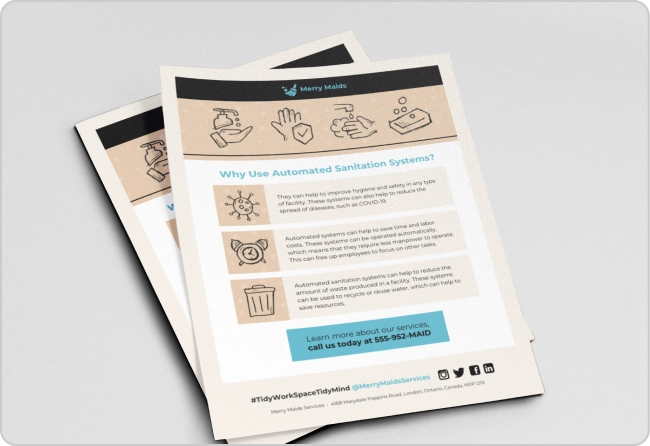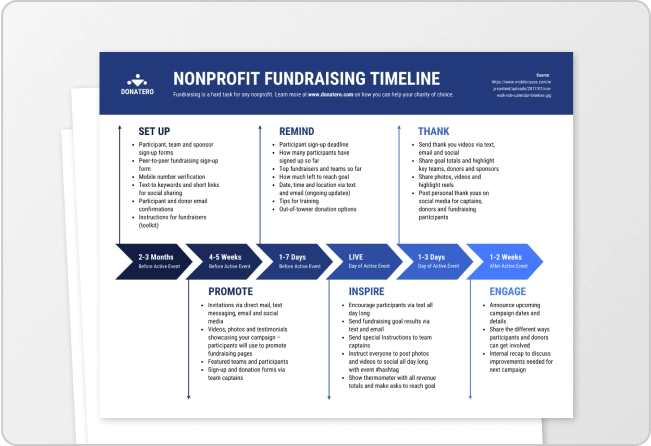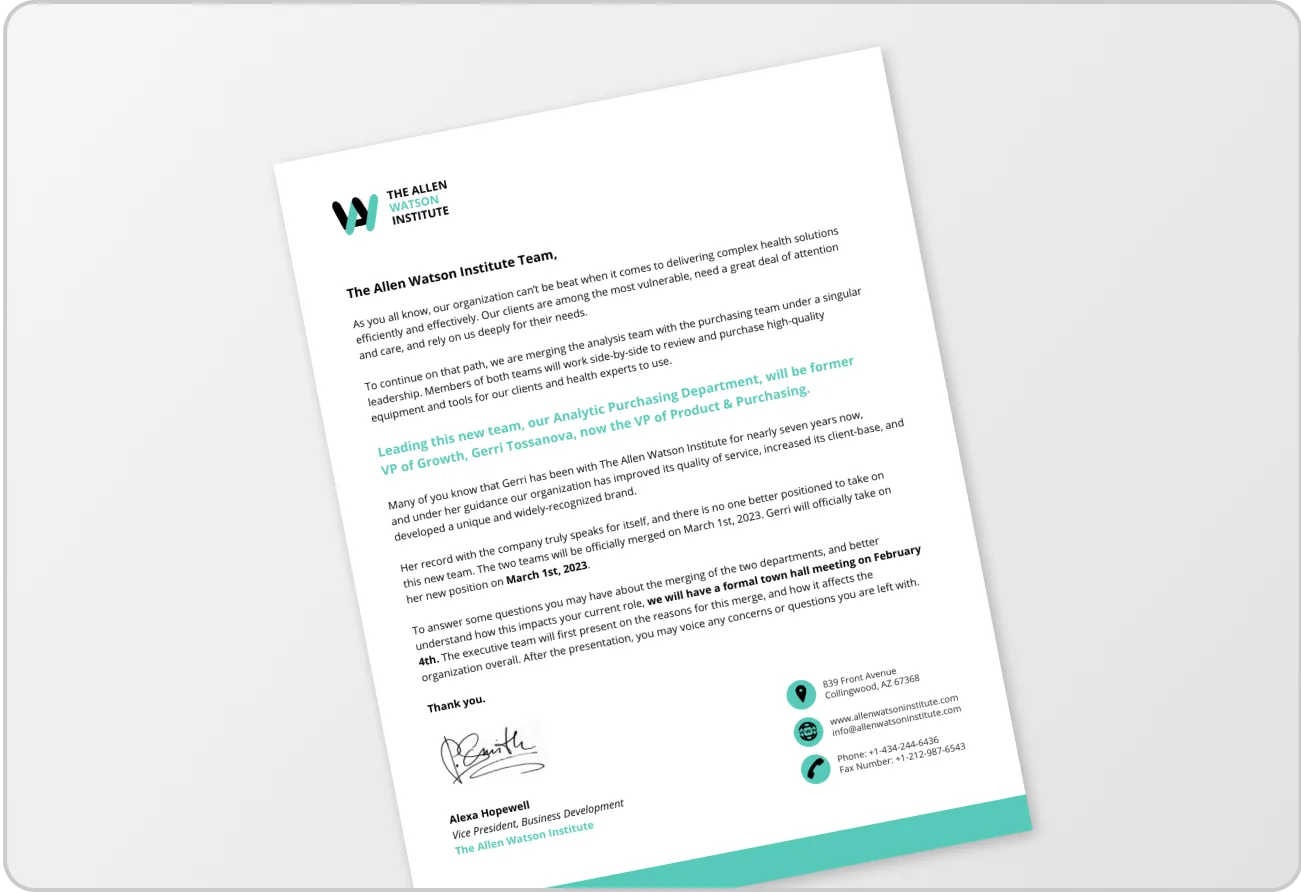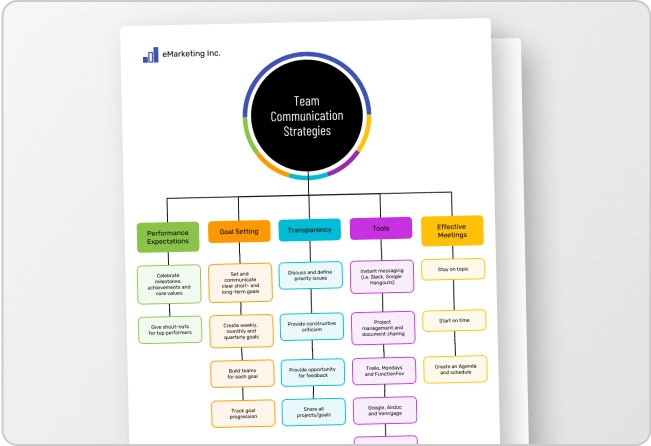
In one of my first roles, I joined a team where no one really knew who was responsible for what. Deadlines slipped, decisions dragged and progress stalled. The issue? We lacked the core elements of organizational structure—clear roles, reporting lines and communication flow.
Once we fixed that, everything started running smoother. In this post, I’ll break down the main org structure types, explain their key elements and show you how to build your own using our Organizational Chart Maker and org chart templates.
What is organizational structure?
An organizational structure is a system of rules and relationships that govern how an organization is run.
An organizational structure defines how a company operates.
Since different divisions in a company have specific roles, an organizational structure helps determine how decision-making is distributed, how work gets done, and how information flows.
Here’s an example of an organizational chart:
Moreover, studying organizational behavior is also critical.
At its basic level, an organizational structure examines the impact of social and environmental factors on how individuals or groups work.
A well-designed and successful organizational structure outlines how people interact, communicate, and collaborate.
They help companies run smoothly and efficiently, as you can see from this internal structure chart.
There are many different types of organizational structures, which are guided by certain behavior, and each has its own advantages and disadvantages.
But they all have the same goal: to help the company run like clockwork. What the best organizational structure is for your own company will depend on its unique needs and circumstances.
Why is an organizational structure important?
An organizational structure is important because they define how responsibilities are divided, and coordinated.
The entire system will fail if an organizational chart is not drawn correctly.
For example, the organizational structure of government agencies, business units, or private companies always has a well-defined chain of command and operating procedures.
Whether it’s the public or private sector, an administrative structure based on policies, rules, and hierarchy is necessary.
The organizational structure is also critical when it comes to growth.
Simon Mainwaring, founder and CEO of We First, puts it well:
“Many corporate leaders and employees have the right intentions, but it can be overwhelming when you consider how everything is affected from leadership styles, to organizational structure, to employee engagement, to customer service and marketplace.”
This underscores how structure plays a key role in aligning teams and supporting every aspect of the business.
Employees are more likely to perform better when a system is in place. The structure helps define who is responsible for what and who the employees can turn to for help.
An org chart helps everyone understand their role in the business as can be seen in this example.
6 key elements of organizational structure
According to Organizational Behaviour (Bobbins, Judge, & Campbell, 2012), the six key elements to an org structure are:
- Work specialization
- Departmentalization
- Chain of command
- Span of control
- Centralization
- Formalization
Work specialization or division of labor
Work specialization refers to how operations are divided into separate roles.
Work specialization not only increases production efficiency and production, but it also increases boredom, weariness, and stress. This can lead to low output, poor quality, increased absenteeism, and high turnover.
Hence, this tendency towards specialization has shifted as people realize broadening the scope of tasks can increase productivity.
Departmentalization
Departmentalization refers to the process by which jobs are grouped together.
This can be done by function, product, geography, process, or customer.
Functional departmentalization divides tasks into categories based on their functions, such as engineering, accounting, or human resources. There are project management software for accountants that you can invest in which can help streamline communication between these different departments.
Chain of command
The chain of command is the line of authority that runs from the top to the bottom, defining who reports to whom.
The right of a boss to issue orders and expect them to be followed is referred to as authority.
Span of control
The span of control refers to the number of employees that can be managed by one manager.
A narrow span of control fosters a more intimate and hands-on work environment as a manager only controls a small number of employees.
But a wide span of control puts numerous employees under one manager, assuming that daily tasks and processes are clearly defined.
The optimal control span will vary depending on the situation.
Centralization
Centralization refers to decision-making concentrated in a single place in the organization.
Top management makes crucial decisions in a centralized structure with little or no involvement from lower-level employees.
A decentralized structure, on the other hand, allows lower-level employees to provide input or even make choices.
Formalization
Formalization aids the creation of processes, relationships, and operational procedures which outlines procedures, rules, and duties for individual employees, units, groups, teams, and the company as a whole.
7 types of organizational structures
If there’s one thing I’ve learned, it’s that your org structure can make or break your team’s ability to adapt. Some models are built for speed, others, not so much. Here’s an overview of 7 common org structures used by companies and how they work when it comes to agility and rapid pivots:
- Functional – Great for efficiency, but not the most agile. Teams often get stuck in silos unless there’s strong cross-functional coordination.
- Divisional – More flexible. Since each division focuses on a specific product or region, they can adapt faster to changes.
- Matrix – Designed for flexibility, with people reporting to multiple managers. It helps teams pivot, but can also create confusion if not managed well.
- Flat – Fewer layers = faster decisions. It’s naturally agile but can get messy without clear responsibilities.
- Team-based – One of the most agile setups. Cross-functional teams are built to shift focus quickly and collaborate on the fly.
- Hierarchical – Not built for speed. Multiple layers of approval slow things down, making quick pivots tough.
- Network – Super agile. It’s decentralized, so teams can act fast, tap into external partners and respond to changes with minimal friction.
Functional org structure
In a functional organizational structure, employees are grouped together according to function or role.
Similarly, internal departments are organized around core competencies required to accomplish a strategic goal.
These org structures generally start at high-level positions and work down from there.
In this hospital org structure example, the organizational chart establishes a clear chain of command from top to bottom.

Divisional org structure
A divisional organizational structure splits a company into self-contained divisions based on products, services, or locations.
These divisions are semi-autonomous and have control over their resources and act as an independent company within a larger one.
In this org chart example, a corporation is organized into divisions based on client segments.
Matrix org structure
A matrix organizational structure is a hybrid of functional and divisional structures. In this structure, employees are grouped based on functional expertise and/or specific projects.
Managers in a matrix org structure have more than one reporting line, which includes both individuals to manage and lines of responsibility.
Depending on project demands and priorities, it might be possible to “switch” from one boss to another.
This flexible authority model is why companies like Procter & Gamble and Google implement matrix structures, allowing functional managers to guide career development while project managers focus on delivery timelines.

Flat org structure
A flat organizational structure, also known as a horizontal or decentralized structure, has few or no levels of management between employees and top leadership.
In a flat organization, traditional layers of authority and decision-making are minimized to empower employees.
A flat structure is often used in startups until they grow big enough to have different departments.

Team-based org structure
A team-based organizational structure, also known as a team structure, emphasizes the formation of well, self-managed teams.
In this type of structure, an organization is composed of multiple teams such as Scrum or Innovation teams that have their own set of responsibilities and goals.

Hierarchical org structure
A hierarchical organizational structure, also known as a traditional or pyramid structure, is a system in which authority flows in a linear fashion from top to bottom.
With this structure, employees are organized into various tiers, each with a different level of authority and responsibility.
At higher levels, there is more decision-making power, while the lower levels carry out specific tasks and report to superiors.

Network org structure
A network organizational structure, also known as a networked organization or network model, is a relatively new approach to organizing businesses.
In a network structure, the organization has a decentralized network of interconnected entities, both internal and external, that collaborate to achieve common goals.

Which organizational structure is best for what type of business?
For different types of enterprises, different structures can work.
A functional organizational structure, for example, may not be right for a company with a lot of products or services because it doesn’t illustrate how they’re related and arranged. In this scenario, a divisional structure could be more appropriate.
In this scenario, a divisional structure could be more appropriate.
Fast-growing companies, especially startups, often begin with a flat structure to stay agile and collaborative. But as teams expand, this model can lead to blurred roles, decision bottlenecks and leadership overload.
That’s when evolving into a hybrid or matrix structure makes sense, preserving flexibility while adding some hierarchy and clearer accountability. It’s not just about growing, it’s about scaling with intention.
However, if a company only sells one product or service and employs a small number of people (say, less than 100), a flat structure is the better option since it allows employees to communicate easily with each other and with supervisors.
When an organization demands change or when difficulties occur, organizational structures must be updated.
When a company starts changing, the structure has to change too, otherwise things just stop working. Take Amazon for instance, once they branched out into stuff like AWS and Prime, their old setup didn’t really fit anymore.
So they switched to a divisional structure, which basically gave each part of the business more freedom to do its thing while still staying on track with the bigger goals.
Ricardo Semler, former CEO of Semco Partners, once said:
“To survive in modern times, a company must have an organizational structure that accepts change as its basic premise, lets tribal customs thrive, and fosters a power that is derived from respect, not rules.”
This perspective emphasizes the importance of aligning structure with adaptability and company culture.
For instance, if a leader wishes to make structural changes to be more responsive to changing consumer needs, they can transition from a functional to a matrix structure.
When leaders find that staff is spending too much time in meetings or dealing with internal issues rather than executing their tasks, they should consider switching from a divisional to a flat structure.
Depending on the demands of the business, an organizational structure can also be a mix of two or more types.
It’s also critical for project managers or management teams to examine their culture to implement necessary changes.
These design changes begin with actions that best match culture rather than what makes sense from a purely economic perspective.
Organizations should select change management techniques that enable them to attain their desired cultures while also allowing them to successfully implement new designs.
5 tips for implementing a corporate organizational structure
Define the organizational structure and levels
The first step in creating organizational structures is to designate management and employee levels.
This includes creating management layers and reporting links, cross-functional processes, and workflows, and clear lines of authority and accountability that enable staff to spot and fix issues before they become a problem.
Develop a philosophy
When designing organizational structures, the company’s philosophy should be clearly articulated.
A philosophy defines the driving ideas for how your company will operate, so it should be expressed in plain language that everyone can understand.
Employees must understand the type of company they work for to know what actions are required of them at all times.
Choose options based on tradeoffs
The organizational structure you select should be based on what works best for your business, given its unique demands and objectives.
Everything must be taken into account when developing a structure to guarantee that all employees understand their positions in the company.
The needs, competitive business climate, culture, communication patterns and processes, worker capabilities, and firm size are all elements to consider.
Prepare managers for their new roles
Because managers are in charge of allocating resources within units, they must be heavily involved in the development of organizational structures.
They should always be aware of how employees interact with each other when performing activities, as well as the impact changes in an org structure, will have on their function.
Communicate changes clearly and often
Changes in the structure influence everyone in the organization, so it’s critical to convey them clearly and frequently.
Employees will be more successful in accomplishing duties if they have a better understanding of organizational structures.
This will not only enhance employee morale but will also create stronger teams that properly manage their time and perform tasks per their needs.
How to create an organizational structure with Venngage
When creating an organizational structure, numerous critical components such as design, chart, job descriptions, and workflows must be taken into account.
Venngage takes care of many of these requirements with organizational chart templates like the one below that you can customize.
- Sign up for a free Venngage account.
- Click on Templates on your dashboard or Home, then Diagrams on the left pane to see a list of the types of diagrams and charts you can make, including an Organizational Chart.

- Choose a template that suits your needs. This will bring you to the canvas, where you can adjust and edit the chart as needed with the many tools available.

- You can save your work to your device if you have a Premium or Business account.
Simply click Download from the upper right menu pane and select PNG or PNG HD if you have a Premium account, or in PDF and PPT if you have a Business account.

Venngage also has a business feature called My Brand Kit that enables you to add your company’s logo, color palette, and fonts to all your designs with a single click.
For example, you can make your organizational structure reflect your brand by uploading your logo, fonts, and color palette using Venngage’s branding feature.
Not only are Venngage’s organizational chart templates free to use and professionally designed, but they are also tailored for various use cases and industries to fit your exact needs and requirements.

A business account also includes a real-time collaboration feature, so you can invite members of your team to work simultaneously on a project.
Which organizational structure is right for you?
We’ve already seen the advantages and disadvantages of different org structures.
But generally, large organizations can benefit from divisional structures since they can be organized by product line or market segment, resulting in a clear reporting chain.
However, if not handled appropriately, it can lead to silos, which is a problem when separate divisions compete against one another rather than collaborate.
On the other hand, smaller companies or teams will benefit from a flat org structure since everyone can contribute while being close to the boss.
But, on the other hand, employees may believe they lack the resources of larger organizations or authority to effectively provide value.
Organizational structure FAQs
How can you measure business outcomes under different structures?
Track key performance indicators like time-to-decision, cross-departmental hand-offs and employee satisfaction. These KPIs reveal how efficiently teams operate, how well departments collaborate and how structure impacts morale.
When should a company switch from centralized to decentralized?
A switch often makes sense as companies grow more complex and need faster, local-level decisions. If leadership bottlenecks are slowing things down or teams need autonomy to innovate, it may be time to shift from a centralized organizational structure to a decentralized organizational structure.
What role do job descriptions play in defining each position’s scope?
Job descriptions act as the foundation for clarity. They define responsibilities, reporting lines and performance expectations, making sure every role fits cleanly within the broader structure and reducing overlap or confusion.
In summary: Build your organizational structure with Venngage today
Venngage simplifies the process of creating organizational structures with stunning org charts.
The examples provided in this post can be used by companies to create structures that are best suited to their goals and available resources.















































